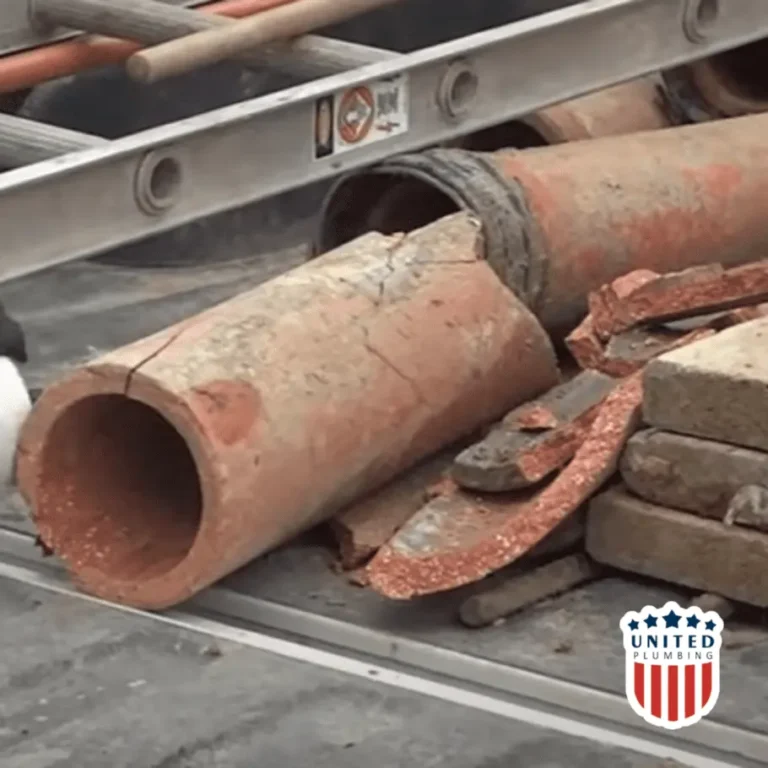FIVE-STAR TEAM WARRANTY &
SAME-DAY SERVICE
Clay Sewer Pipes: Problems and Solutions
Clay pipes have been used for centuries in plumbing systems around the world. Their durability and affordability made them a popular choice for sewer pipes, especially during the 19th and 20th centuries. However, as time passed, clay pipes began to present problems that required extensive repairs and replacements.
The history of clay pipes can be traced back to ancient Babylon and Ephesus, where they were used in the construction of sophisticated plumbing systems. In Turkey, clay pipes were also used in the Ottoman Empire for water supply and drainage systems. In the United States, clay pipes were widely used for sewer systems during the 19th and early 20th centuries before being replaced by newer materials.
Despite their historical significance, clay pipes present several problems for modern plumbing systems. Over time, clay pipes can crack, collapse, or become misaligned due to shifting soil or tree root invasion. These issues can lead to costly repairs and replacements. As such, it is important for homeowners and municipalities to be aware of the potential problems associated with clay pipes and to take proactive measures to address them.
Composition and Characteristics of Clay Pipes
Material Properties and Manufacturing
Clay pipes are made from natural materials such as clay and terra cotta. The process of making clay pipes involves molding the clay into the desired shape and then firing it in a kiln to create a ceramic-like end product. The firing process creates a vitrified clay pipe that has high compressive strength but low tensile strength.
One of the advantages of clay pipes is that they are environmentally friendly and can be recycled. They are also unaffected by acids and other chemicals commonly found in sewage systems. However, they are susceptible to root intrusion and leaks, which can cause significant damage to the pipes over time.

Advantages and Disadvantages
Clay pipes are durable and can last for many years if properly maintained. They are also heavy and can withstand the weight of soil and other materials that may be placed on top of them. However, they are brittle and can crack or break if subjected to excessive force or pressure.
One of the main disadvantages of clay pipes is that they are difficult to work with and transport. They require specialized equipment and trained professionals to install and repair. Additionally, they can be more expensive than modern pipe materials such as PVC.
Overall, clay sewer pipes have both pros and cons. While they are durable and environmentally friendly, they are also heavy, hard to work with, and susceptible to root intrusion and leaks. It is important to carefully consider the specific needs of a project before deciding to use clay pipes.
Challenges and Solutions in Clay Pipe Plumbing
Common Issues with Clay Sewer Pipes
Clay sewer pipes were once the standard in sewer piping, but they present a number of challenges. One of the most common issues with clay sewer pipes is root intrusion. Tree roots can grow into the joints of the pipes, causing leaks and clogs. Another issue is that clay sewer pipes are prone to cracks and leaks due to age and wear. These leaks can lead to sewage backups and other plumbing issues.
Repair and Replacement Options
When faced with plumbing issues related to clay sewer pipes, there are a few repair and replacement options available. One option is to repair the pipe using a chemical sealant. This can be a cost-effective solution, but it is not always reliable and may require multiple applications. Another option is to replace the damaged section of pipe with ABS or another modern material. This can be expensive, but it is a more reliable solution.
For more extensive damage, it may be necessary to replace the entire sewer line. This can be a costly and time-consuming process, requiring excavation and installation of a new sewer line. However, it may be the best solution for homes or businesses with aging or failing clay sewer pipes.
Overall, while clay sewer pipes were once a reliable and common choice for urban plumbing and public sewer systems, they present a number of challenges and are no longer the most reliable option. When faced with plumbing issues related to clay sewer pipes, it is important to consult with a professional plumber, such as to determine the best course of action.
Post views: 739
Latest posts

How Long Do Water Heaters Last? Typical Lifespan by Type (Homeowner’s Guide)
Your water heater works quietly behind the scenes every single day until one day it doesn’t. One of the most common...

Electrical Panel Upgrade California: Costs, Safety & When You Need One
An electrical panel upgrade in California is one of the most important safety and performance improvements a...


If you still have questions or need advice, please leave a request and we will contact you as soon as possible
Need a plumber and got no clue where to start?
(408) 539-6936Facing a plumbing issue? Get a FREE in-person estimate and quick solutions from our skilled technicians, ensuring your home runs smoothly again!
